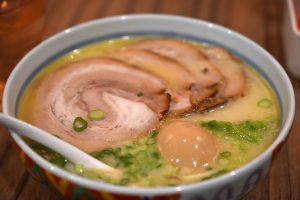
The Nikon Z5II offers uncompromising performance in any light, any moment.
The new Nikon Z5II is a massive improvement over the predecessor. The first Z5 feels really like an entry-level full-frame camera, while the Z5II has upped the ante, incorporating many features from the higher-end models, like the EXPEED 7 image processing engine, 5-axis in-body Vibration Reduction system of up to 7.5 stops (vs. 5 stops on the Z5), -10 EV autofocus detection range. And unlike the Z5, the new Z5II supports 3D tracking, detects up to 9 subjects – people, animals, vehicles and planes – with the 299-point auto-area focus tracking across the entire frame.

Enthusiasts and professionals can enjoy the Z5II with its dedicated Picture Control button to allow users to switch between image recipes, a term to describe the filters or colour tone settings that define a unique character or style of a film. These improvements mean the Z5II user can shoot in even lower light conditions, track multiple subjects and capture them up to 14 frames per second in continuous high-speed mode.
For content creators, the Z5II supports up to 4K video and 12-bit N-RAW recording, as well as UAC and UAV for live web-streaming. For colour grading, the Z5II can handle N-Log, HLG and SDR recording modes. Users can record up to 125 minutes of video per clip.

As an experienced DSLR user, it would be better to shoot in RAW format and then process the images on the computer. On the Nikon Z5II, images can be uploaded to the Nikon Imaging Cloud via the smartphone using NX MobileAir, tethered to the computer with NX Tether, and converted and edited RAW images with NX Studio. Remote shooting from the smartphone is also possible with SnapBridge.

I enjoy the build quality of the Z5II, the sensitive touch panel for instant control, and the overall camera response. The zoom preview helps tremendously in achieving accurate focus, while the focusing ring on the lens provides a convenient option to override the focus.

A less stellar feature of the Z5II would be the electronic viewfinder. While the digital display allows me to focus in low light, the resolution is of relatively lower quality, causing image sharpness and dynamic range to be somewhat less reliable. The larger LCD offers better details.

Another inconvenience is the need to switch to video mode before I can trigger the video recording. This additional step has caused me to miss capturing some moments.

Finally, the lack of a pop-up flash means there are no opportunities for a quick fill-in flash. Given the Z-series no longer uses mirrors for the optical viewfinder, surely they can fit a small flash for more creative lighting.
The Nikon Z5II can be a reliable backup body for heavy shooters and a high-performing camera for the enthusiast, capable of both still and video productions.
For more information on the Nikon Z5II, click here.








